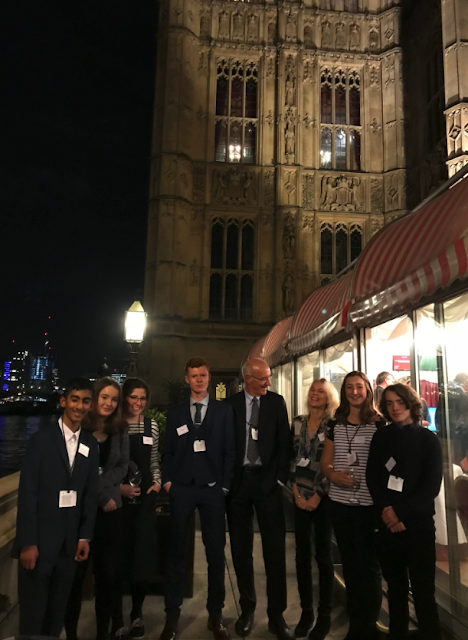7th September 2018
At 11am, I went to King's Cross to travel on a two-hour journey to Hull, for my first trip to Spurn Bird Observatory. This was because I was a finalist for the Martin Garner Spurn Young Birder of the Year competition. I was so excited! When I reached Hull, I travelled to an apartment in Withernsea, twenty minutes from Spurn, unpacked my things, and set off for Spurn.
When I got to the famous Crown and Anchor pub, I met with David Walsh (who was at the BTO Birdcamp this year), and we decided to try and look for Pied Flycatchers in the 'triangle' of the reserve. There was also a Rosefinch that had been spotted on Beacon Road that morning, but had flown north. We heard one in the Cemetery, but unfortunately didn't see it. However, in the fields nearby, there were a few Roe Deer, House Sparrows, Swallows and Kestrels.
Roe Deer
After nearly seeing my first Pied Flycatcher, I headed down the road to Westmere Farm, where all of the Spurn Migration Festival, or MigFest events were being held. Richard Porter, a very respected naturalist who has worked in conservation in the Middle East for decades, gave a captivating talk on the challenges facing migrating birds throughout the Middle East, and how they are being dealt with.
With Richard Porter
8th September 2018
This was the day of the competition! At 9am, the finalists, Angus Jennings, Alex Liddle, George Rabin, Jack Bradbury, Rowan Wakefield and I met in the Observatory common room, where we were given an introduction to the competition by Nick Moran (who led the BTO Birdcamp this year). Straight after, Angus, Alex and George went to do seawatching and vizmig, while Jack, Rowan and I went to do the lab test, birding on the estuary and birding in the bushes.
I started with the lab test, where I had to identify different calls and name different feathers on a stuffed Whimbrel. When I started walking to the next assessment, another birder told me there was a Pied Flycatcher in a tree nearby. As much as I wanted to see it, I knew I had to continue with the competition. The next assessment was looking for migrants in the bushes, but unfortunately there were only Robins and Blue Tits, and I was asked questions about migrating chats.
I then went to a private hide in someone's back garden (wow!), which faced the Humber Estuary, for the next assessment. I was asked to identify different waders, and which of them had a white rump. The older finalists, then swapped assessments with the younger ones, and we were taken by van to a different part of the reserve. On both the seawatching and vizmig, it was pouring with rain, and unfortunately I didn't get to see much, apart from my first Sandwich Terns.
Back in the common room, Jack and Angus were announced as Spurn Young Birders of the Year, and Alex and I decided to find the Rosefinch, which had been seen that morning. When we got to the Yorkshire Wildlife Trust Visitor Centre, there was a huge crowd, but no Rosefinch. It started raining again, and Alex stayed in the area where the Rosefinch was last sighted, while I met with David Walsh and walked to the Seawatch Hide, where we saw a few seals. Suddenly, someone shouted 'Rosefinch!' over a walkie-talkie, and about twenty people (including David and I) burst out of the hide, and walked briskly to the site. David focused his scope on the bird, giving us amazing views:
Common Rosefinch
Common Rosefinch
We then found Jack and his mum, and we walked along the estuary, with hopes of Purple Sandpiper. There were none, but there were many Turnstone, Dunlin and Golden Plover feeding.
The Estuary, with a few Dunlin
Find the Turnstone
On the way back to Westmere Farm, we tried to look for Pied Flycatchers, but there was no sign of them. When we got back to Westmere, Jack's mum kindly drove us to Easington, a nearby village, to look there. Unfortunately, they weren't there either. However, Jack found a Tree Sparrow, and there were many hirundines.
A hardly visible complete record shot of a Tree Sparrow
In the evening, the awards were presented at Westmere Farm by Richard Porter and Andy Clements, director of the BTO. We all received membership to Friends of Spurn, BTO and British Birds, as well as a trophy a Sound Approach guide to birding. The winners, Angus and Jack, received Swarovski and Opticron binoculars. This has been an incredible experience, going to an amazing place and meeting lots of like-minded people, and I would definitely go to Spurn again!
The finalists



























































